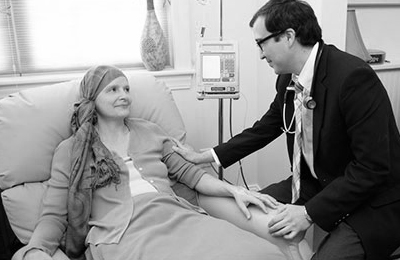Cervical Cancer: 10 Important Facts You Need to Know

Happy New Year! January is cervical cancer awareness month. Here are ten important facts about this type of cancer to serve as a springboard for your further research and interest.
1.Cervical cancer is the third most common gynecologic cancer and cause of death among gynecologic cancers in the US, but has lower incidence and death rates than uterine and ovarian cancers, as well as many other cancer sites. Unfortunately, in countries that do not have access to cervical cancer screening and prevention programs, it remains the second most common type of cancer and cause of cancer deaths among all types of cancer in women.
2.Human papillomavirus (HPV) is linked to the occurrence of cervical cancer and can be found in 99.7 percent of cases. The most common cell types of cervical cancer (when observed under the microscope) are squamous cell (69 percent of cervical cancers) and adenocarcinoma (25 percent).
3.Some known risk factors for cervical cancer include: early onset of sexual activity; multiple sexual partners; a high-risk sexual partner (ex: partner with multiple sexual partners or known HPV infection); history of sexually transmitted infections; history of vulvar or vaginal squamous intraepithelial neoplasia or cancer; compromised immune system (ex: HIV infection); early age at first birth (younger than 20 years old) and 3 or more full term births are also associated with an increased risk of cervical cancer; low socioeconomic status; in the US, nonwhite as opposed to white women; oral contraceptive use; and in contrast to squamous cell cancer of the cervix, cigarette smoking is not associated with a significantly increased risk of adenocarcinoma of the cervix compared with nonsmokers.
4.Cervical cytology (Pap smear) is the main test done for cervical cancer screening. Cytology should also be done for women suspected to have cervical cancer.
5.Early cervical cancer often does not cause symptoms, underscoring the importance of screening. The most common symptoms associated with presence of cervical cancer include abnormal vaginal bleeding (including post intercourse bleeding) and vaginal discharge. A mass may or may not be visible or felt on physical (pelvic) exam. Advanced disease may reveal itself with pelvic or lower back pain, which may spread along the backside of the legs. Other signs of advanced cancer could include symptoms of pelvic pressure, blood in the urine, and vaginal passage of urine or stool.
6.The diagnosis of cervical cancer is made by biopsy of the abnormality of the cervix, or a portion of suspected advanced disease.
7.Cervical cancer can spread by directly invading local tissue or by spreading in the lymph or blood systems. Direct extension may involve the uterus, vagina, fallopian tubes, pelvic cavity, bladder, or rectum. The most common sites for distant spread of cancer include the lungs, liver, and bone; the bowel, adrenal glands, spleen, and brain are less common sites.
8.Recommended treatment depends on how early or advanced the disease is in terms of its extent, and may involve uterus-sparing surgery, radical hysterectomy, radiation, radiation plus chemotherapy, or monoclonal antibody treatment.
9.Survivors of cervical cancer are at risk for both local (eg, vaginal or pelvic) and distant recurrences, and most recurrences happen within the first three years of medical follow-up.
10. Cervical cancer survivors can suffer from bowel, bladder, and sexual dysfunction, as well as leg lymphedema (swelling) and fatigue. Cervical cancer patients report more anxiety, depression, and stress than survivors of other types of gynecologic cancers (ex: ovarian, uterine), and so psychological support of survivors is important to help improve quality of life.
I hope these facts have increased your awareness about cervical cancer, and encourage females to keep up with their Pap smears regularly!





















